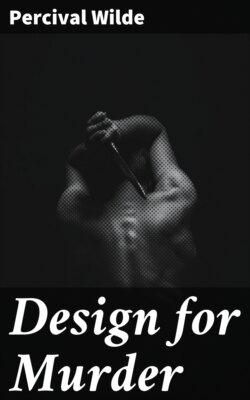Читать книгу Design for Murder - Percival Wilde - Страница 3
ОглавлениеHere, then, are the “Overlook” papers.
They no longer exist.
They have been ashes these many months: they have returned to the nothingness from which they came.
But, as the astute reader will observe, I have resurrected them, allowing them to be read over my shoulder, as it were, and at the same time I have edited them, substituting for the real names of the individuals involved, who had more publicity than they desired for the doings here chronicled, other names; and for that liberty I apologize to sundry Ashtons, Carters, Densmores, Evanses, Logans, and Morrisons, none of whom I had in mind, but whose cognomena I borrowed because they are borne by so many worthy people.
Various angles in the oddly told tale which follows have intrigued me. Not a single person, of the ten who matter most, is described well enough to permit a positive identification to be made. Two, according to the narratives, are of less, and one appears to be of more than average height; but such indispensable details as the color of hair and eyes, the regularity or irregularity of features, and the peculiarities which distinguish one physiognomy from another are not even mentioned. On the contrary, we are told at the outset, “We are all alike as peas in a pod.”
Yet the statement, it seems to me, is speedily disproved. We should not recognize the host, Carter, for instance, if we met him in the street; but we know the man, for when he thinks, when he speaks, and above all, when he writes, he describes himself in no uncertain terms. A thousand words set on paper may be intended to deal with another subject, but inevitably they reflect the mental stature, the thought processes, the personality of the man who wrote them. These ten persons were old friends: therefore their exteriors did not matter: therefore they wasted no time in discussing them. But consciously or unconsciously they depicted themselves and each other from the inside outward, painting psychological portraits, which, if rarely flattering, are nevertheless more revealing than would be the most accurate external likenesses. It is a curious fact that the more exact a description, the less it tells us: a string of numbers and letters identifies a fingerprint so completely that the person whose sign manual it is can infallibly be singled out of a million: yet the owner of that finger may be a man or a woman, an adult or a child, even alive or dead. How much more revealing is the process which lays thought upon thought, reaction upon reaction, and which builds characters that actually live!
In a previous venture, Inquest, I encountered persons who came from various social levels. A clear majority of them could not speak sound grammatical English, expressing themselves in rural dialects; yet from the interplay of those diverse men and women action was born, and carried itself through to a conclusion.
Here the approach is psychological. We deal with a single stratum. It is obvious that the ten persons we first meet have had every so-called advantage that money, background, and education can give them. While they are willing, some of them, to commit crime, they are unwilling to split infinitives, and it is with some amusement that I note how critical they are of the quality of their own writing. They begin, habitually, with the statement, “Of course I don’t know how to write,” and they immediately disprove it. That, it seems to me, makes their psychologies even clearer. They are never naïve. Except when deeply moved, they are not un-self-conscious. They are thinking, nearly always, of the impressions they are making, and in so doing they characterize both themselves and their friends. We never learn, therefore, whether Cynthia and Sue and Mary and Priss and Kathleen are blonde or brunette; but it could be only a careless reader who would confuse one with another. I like to think that we learn to know them as we know characters in stage plays: externally they vary as do the actors who take the parts: internally they remain true to the basic laws of their beings.
I have noted, with some interest, the jittery, schoolgirlish, almost disarming beginning, and how quickly it mounts to a pitch of growing terror. For me it greatly increases the power of the narrative, for it is incongruous that such an introduction should lead to slaying, and death, and horror. The more incongruous it is, the more paralyzing is the dramatic effect. Precisely as the friction of characters leads to clash and conflict, so here the friction of psychologies leads to the most violent action, for after all, character is psychology, and psychology is character.
Sharon, Connecticut.
Miami Beach, Florida.
